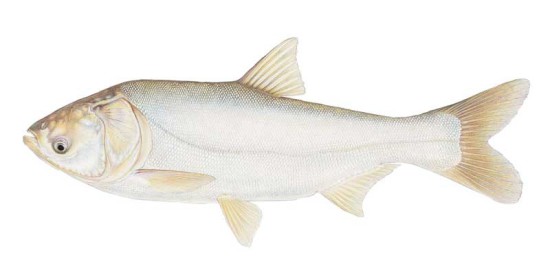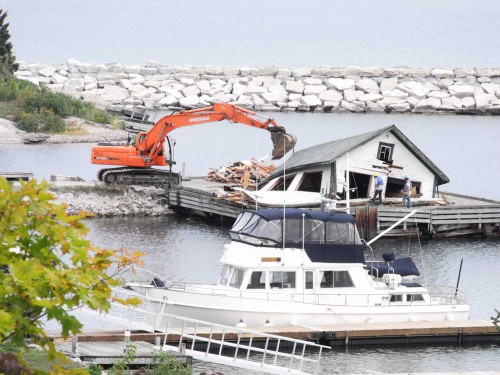TORONTO—While acknowledging the catastrophic affects Asian carp could have on the Great Lakes if they establish there, and the need for measures having been and to be taken to prevent them from doing so, the executive director of the Canada-Ontario Invasive Species Centre (COISC) says they have not made it to the Great Lakes (including Lake Huron) thus far.
“No one will disagree this is a significant issue with the damage done to the lower Mississippi River and its basin, for example,” Bob Lamb told the Recorder in an interview last Friday. “Where they have been found there has been severe damage done to the ecosystem.”
“We don’t want any of this to happen in the Great Lakes and everyone is taking steps to make sure it doesn’t happen,” said Mr. Lamb. He spoke to the Recorder after an Asian carp public forum was held in Toronto last week, put on by the Great Lakes and St. Lawrence Cities Initiative and the COISC.
“The forum was meant to largely inform the public what is going on in the US to address the problem and demonstrate the cooperation of Canada-Ontario governments in these efforts,” said Mr. Lamb. “There has been a lot going on and steps taken that has not been publicized. In fact there has been an incredible amount of work taken place so far.”
“I’d estimate there was in the order of 20 submissions made by various stakeholders at the forum.”
Mr. Lamb said the US and Canada has done a lot of work already to prevent Asian carp from entering the Great Lakes. “It is all about trying to keep these carp at abeyance and advance measures to make sure they don’t get into the Great Lakes. He said control measures, such as scientific DNA early detection (to see if they are present), aggressive fishing and many other measures, are already in place.
“At this point there is definitely no evidence to show that Asian carp have established in the Great Lakes,” stated Mr. Lamb. “In 2000 DNA tests found evidence of one in the Great Lakes and a couple in Lake Erie, but this was just DNA evidence—there is no evidence of Asian carp anywhere in the Great Lakes.”
Mr. Lamb said new measures such as intensive fishing efforts have been in place for a number of years, and we are confident none of the Great Lakes have been populated at this time; once Asian carp are established somewhere it is really difficult to eradicate them,” he said. “That is why all efforts and programs are being designed to keep them out of the Great Lakes.”
Part of what has sparked debate is that DNA tests suggested Asian carp were in Ohio and Michigan but if, for instance, other fish eat Asian carp and then produce waste, the DNA will indicate they are present. As well, Asian carp can rub up against ships and this can suggest DNA is in a particular water body when it isn’t the case, continued Mr. Lamb.
“Key actions have been taken by the US Fish and Wildlife service in various states and border areas, aggressive steps have been taken to curtail them, especially in areas like Illinois, Ohio and Michigan,” said Mr. Lamb. And the Asian Carp-Canadian Council, Ontario Natural Resources and the federal Department of Fisheries and Oceans are members of that group. “They are all involved in scientific measures and actions being taken to keep the Asian carp at bay.”
“One of the keys is that using DNA evidence, they are used as a valuable tool in looking at vulnerabilities Asian carp have and provide ways of early detection and ways of keeping them out of the lakes,” said Mr. Lamb. He pointed to the use of electric barriers, electro-fishing, and a proposal such as using hydro acoustic guns in the US that Asian carp react to and basically swim away from as areas being looked at, or that are already in place. He said there is a also a market in place for commercial fisherman to take Asian carp in the Mississippi River, for instance, again cutting down on their population and reducing biomass, with the fisherman getting financial help from the US government to harvest Asian carp.
Mr. Lamb explained that in Canada, an assessment study was carried out last year on the ability of Asian carp to survive should they reach the Great Lakes (all funded by the government). The results show they would survive here if they are allowed to establish, so the government of Canada through the DFO is providing $17.5 million over four-five years for more research outreach and communications to be looked at and to take preventive actions.” As well, Ontario is involved in an extensive monitoring exercise. “There is a lot of misinformation out there that nothing is being done by the governments to eradicate and prevent Asian carp from getting into the Great Lakes and our waters, but this is definitely not the case. A lot of research and actions are being taken to keep Asian carp out.”





